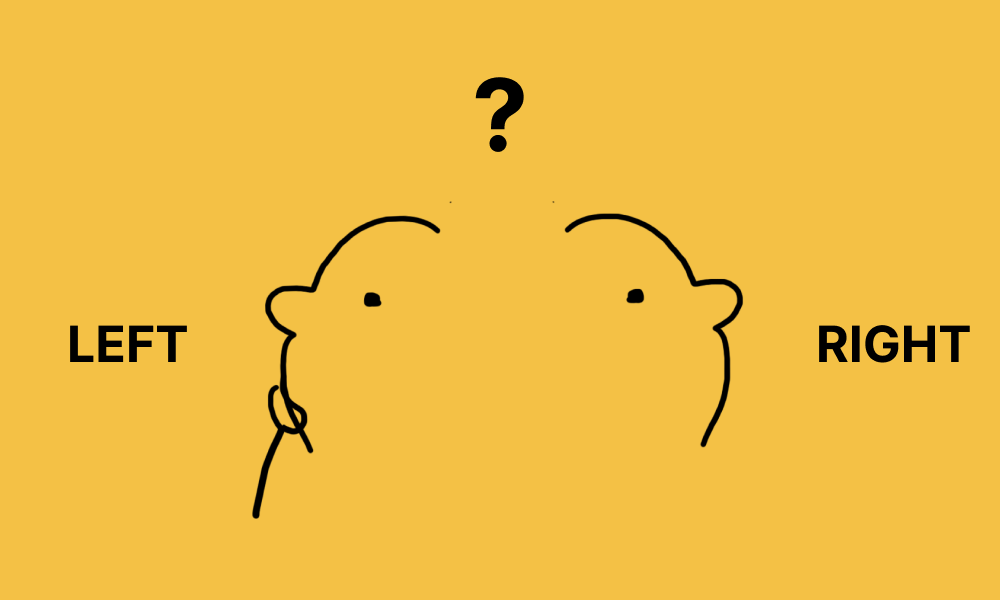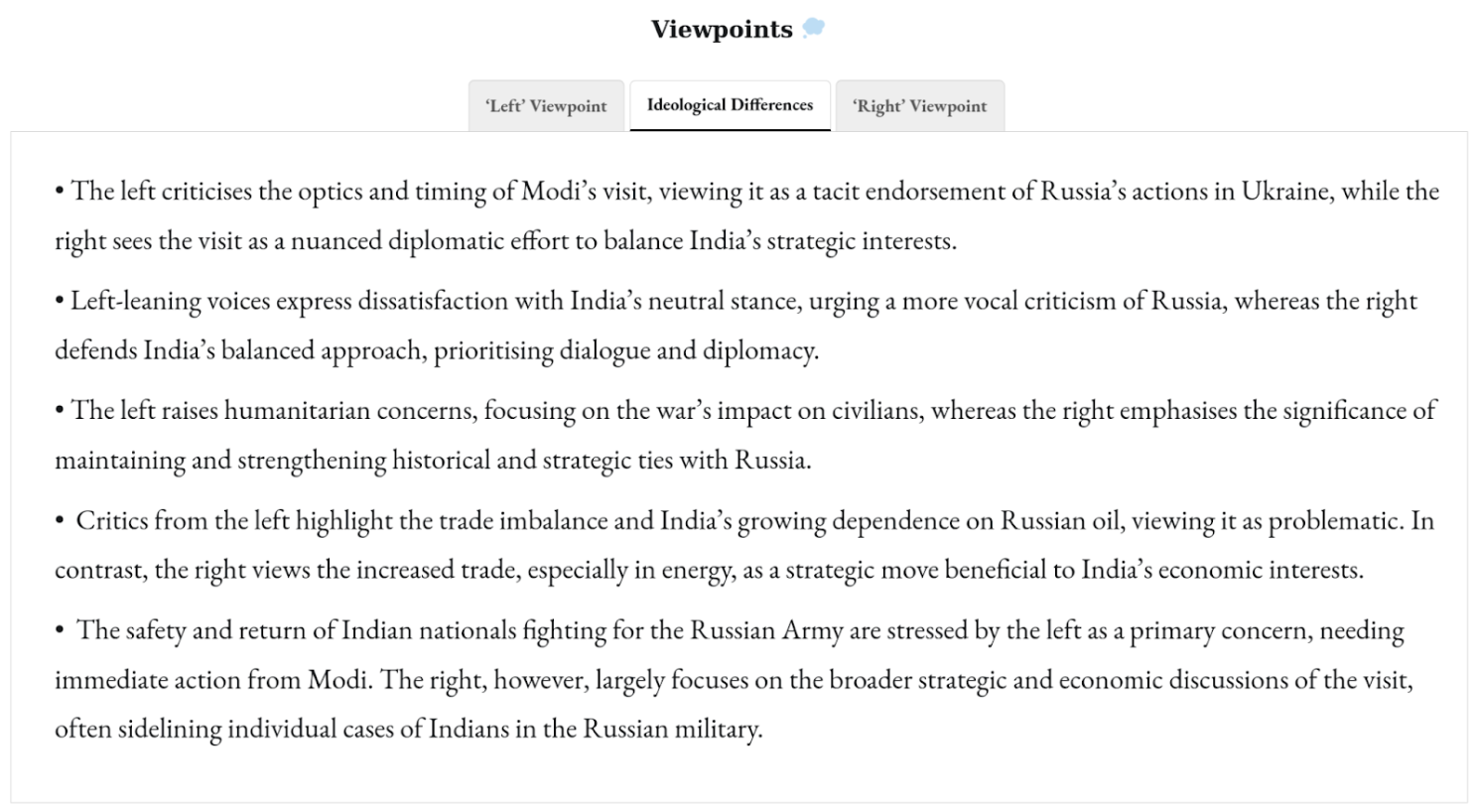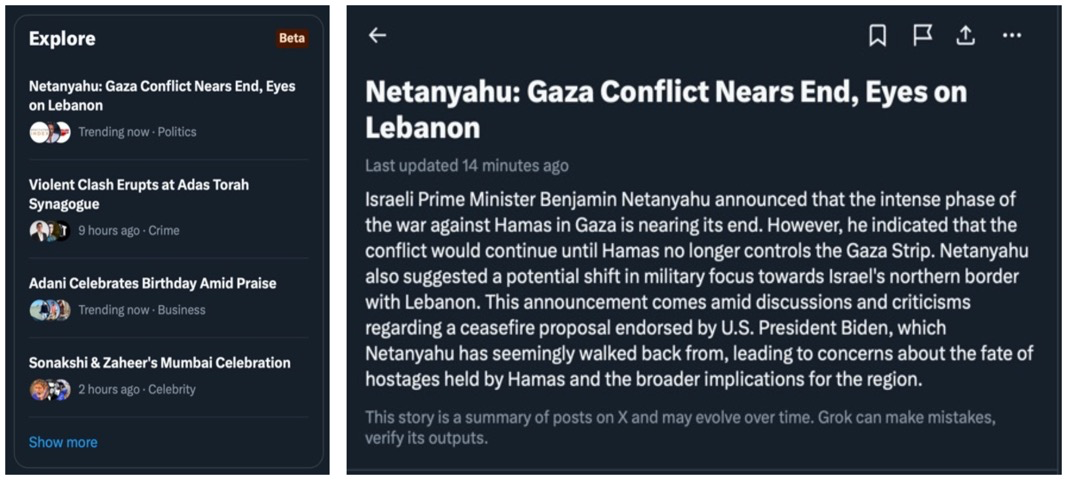
What If: AI could ‘Left, Right & Centre’

Originally published on The Times of India.
X’s personalization algorithm often recommends valuable content. Recently, it surfaced a post by LeftRightAndCentre.in (LRC) on a controversial topic—India’s outreach to Russia amidst the Ukraine war—with a decent analysis. Upon clicking, I discovered it was from a Large Language Model powered news product built by two researchers: Germany-based Computer Scientist Ashwin Prasad and Bangalore-based Journalist Vibhu Prakash.
Similar to Ground.News, LRC is a news website that presents a broad spectrum of political views on news topics to reduce polarization and promote cross-partisan dialogue. In its current form, LRC faces the challenge of navigating India’s intricate political landscape and establishing a strong foothold in an already crowded news market. Hence, they might want to consider other pivots.
What makes LRC unique
LRC’s is fully automated. Given a news topic, it combs through hundreds of articles from various Indian news websites, analyzing their political leanings, summarizing their core arguments, and synthesizing them into a balanced narrative using OpenAI’s GPT-4 and a fine-tuned Meta-Llama-3-70B model. The entire process, from data gathering to content creation, is AI-driven, with minimal human intervention limited to fact-checking and minor edits.
Each article follows a six-part structure: a cover image, an introductory overview, a jargon buster, viewpoints from both the left and right, a roundup of prominent voices, and a list of sources. This format ensures a comprehensive and nuanced understanding of the issue.

They also claim to be able to produce each post with $2 worth of API and server costs. At scale, this costing will drop further. To build scale, they are already in talks with other researchers to launch similar country-specific portals using their technology.
From ‘Left and Right’ to ‘Context’
From ‘Website’ to ‘Plugins and Bots’
LRC, in its current form as a standalone website, could struggle to build distribution. The news category is already crowded and commoditized, and it takes a lot of momentum to build a loyal, direct audience. They could explore the possibility of creating a browser extension. This extension could automatically analyze news articles or social media posts as users browse the web, providing them with a balanced summary of different viewpoints on the topic. This would enable users to access diverse perspectives effortlessly, promoting a more informed and nuanced understanding of complex issues.
From ‘Solo’ to ‘Co-building With Others’
To foster depolarization on the open internet, established organizations like MIT Media Labs, Wikimedia, or Automattic (the creators of WordPress) could spearhead the development of LRC as an open-source, crowd-sourced civic technology infrastructure. This could manifest as an open “Community Notes” system that various web platforms could integrate into their comments, chats, or articles. Whenever a polarizing topic arises, an automated bot would present diverse perspectives as an antidote to partisan echo chambers.
News is history unfolding in real time, with daily newspapers and TV news reporting on developing facts. The signal-to-noise ratio typically improves as weekly magazines and analysis columns delve deeper, but coverage often wanes once a topic leaves the news cycle. This is particularly true for slow-moving civic issues, where change occurs over decades. LRC could evolve into a “Slow Blog,” an AI-powered, Wikipedia-like platform that builds a long-term memory for these topics. This concept, previously attempted by academia-leaning news products in the 2010s under the name “structured journalism,” may now be feasible with advancements in supporting technology.
Competition
Who else is likely to do what LRC does? Grok AI on X is evolving rapidly and could potentially offer this solution out of the box. An existing beta feature on X already converts conversations into short news articles, notably filtering out noise — conspiracy theories, gossip, and trivia — to focus on “newsworthy” topics. It’s plausible they are training on sources like the Google News feed to discern between news and non-news. Backed by the data being collected by ‘Community Notes,’ it is just a matter of time.

Conclusion
The team behind LRC has built a strong proof-of-concept, showcasing a promising civic infrastructure. However, they face significant challenges in a crowded news market and India’s complex political landscape. To fully realize their potential, they should think bigger and bolder and consider broader collaborations and new directions to overcome these challenges.
Want to republish it? This post was released under CC BY-ND — you can republish it as is with the following credit and backlinks: ‘Originally published by Ritvvij Parrikh on The Times of India‘. The author retains the copyright and any other ancillary rights to the post.
